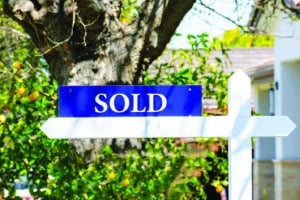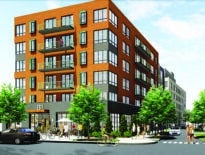
Homes outside of Interstate 495 are seeing the biggest jumps in value over the pre-pandemic norm, according to the latest home sales report.
The headlines from the latest home price statistics were all about the big jump in the statewide median sale price over the past two years, and understandably so.
Jumping to more than 27 percent over that period, to $510,000, is a big deal.
But a closer look at the latest numbers reveals an interesting and likely pandemic-driven shift taking place just beneath the surface.
Some of the priciest ZIP codes – think Brookline and Cambridge – have begun to top out after years of price appreciation according to The Warren Group, publisher of Banker & Tradesman.
However, the biggest percentage gains in home prices are taking shape place beyond the Interstate 495 beltway and beyond Greater Boston altogether, with an influx of buyers from urban areas sparking bidding wars.
David Crowley, a vice president and broker at One Boston Luxury Living|William Raveis Boston, said a townhouse in Tewksbury he listed wound up with 40 bids.
“The city feeds the suburbs and the suburbs feed the city,” he said.
Big Gains Beyond 495
With the shift to remote work with the onset of the pandemic in March 2020, stories and anecdotal reports began popping up of people, particularly white-collar professionals, suddenly realizing the can live anywhere. Armed with this knowledge, the stories went, they started renting or buying places on the Cape, Western Mass., and everywhere in between.
Based on The Warren Group’s November market report, this was no flash in the pan, but a real trend.
Lagging the market after the Great Recession, home sale prices in towns across the Cape have rapidly regained lost ground over the past two years.
Barnstable’s median home price jumped 38 percent to $680,000, and it was not atypical, with Eastham, Sandwich, Brewster, Orleans, and Falmouth, all seeing prices rise faster than state average of 30 percent over the past two years.
The same story can be found across much of the rest of the state beyond 495.
The median home price in Ashby in North Central Massachusetts shot up 42 percent since November 2019, to $380,000, while the struggling industrial town of Athol saw a 41 percent increase to $239,000.
Towns across Western Massachusetts cleaned up as well, from tony Great Barrington – a 41 percent increase to $458,000 – and Sheffield, which rose 46 percent to $460,000, to sleepy Worthington, which went one better with a nearly 50 percent increase that pushed its median sale price over the $300,000 mark.
Brokers Followed Buyers
As buyers fled more crowded urban areas for more space and more reasonable prices, brokers have followed them.
Crowley, a veteran Boston real estate broker who lives in the South End, has done deals as far out as Clinton, a rural town in Central Massachusetts that has become a less expensive alternative to Harvard, with its $800,000 median sale price, or even Shirley and its $450,000 median.
A raised ranch he listed in Clinton, where the median price is $335,000, garnered dozens of bids, Crowley noted.
“I have suburban buyers out there – they are getting outbid,” Crowley said. “I am actually out in Metro West.”

Scott Van Voorhis
Sara Rosenfeld, a premiere broker at Coldwell Banker who is based in Somerville, has also ventured outside of her typical territory, though staying within the Boston suburbs and taking clients to homes in Carlisle and Bedford as well as to Chelsea.
While the gains in many suburbs within the 495 and Route 128 beltways have fallen below the statewide median increase there have been exceptions, with Weston, Hingham and Cohasset – where the median prices are all over $1 million, or considerably more in Weston’s case – have either matched or beat the state in terms of percentage gains.
But other pricey and coveted locales are beginning to top out, with Brookline’s media price rising just a single percentage point over the past two years, and with South Boston, Somerville and Cambridge seeing modest gains in the 5 percent to 6 percent range in 2021.
As she works with buyers, Rosenfeld is also venturing farther from her core market in search of something affordable, helping a pair of doctors find a three-bedroom condo for $750,000 in Chelsea.
“My buyers are in a lot of pain and it kills me,” Rosenfeld said.
Scott Van Voorhis is Banker & Tradesman’s columnist; opinions expressed are his own. He may be reached at sbvanvoorhis@hotmail.com.




 |
| 

